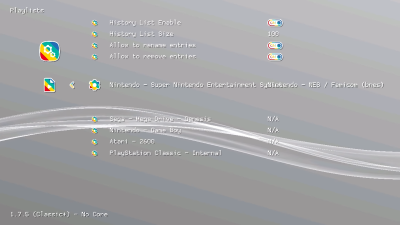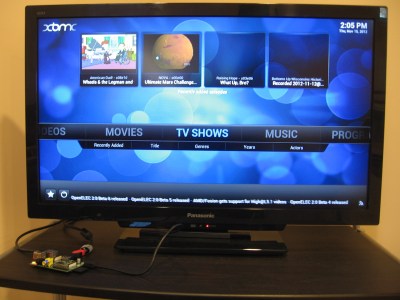The Raspberry Pi was initially developed as an educational tool. With its bargain price and digital I / O, it quickly became a hacker favorite. It also contained just enough power to serve as a compact emulation platform for anyone savvy enough to load a few ROMs onto an SD card.
The titans of the video game haven’t turned a blind eye to this, realizing that there is still a market for classic titles. Combine that with the internet’s love for everything small and cute, and the market was ripe for the release of tiny retro consoles.
Often out of stock when released, devices have sometimes met with mixed reviews due to the quality of experience and the games included in the box. With so many people turning the Pi into a retrogaming machine, these purpose-built mini consoles should have been immediately appreciated by hackers, right? So what happened?
Ãœber Alles emulation
The first salvo to hit the market was the NES Classic Edition, launched in late 2016. It quickly took the market by storm, selling 2.3 million units in its first six months. Shipments sold out almost immediately, with many units scalped on eBay for multiples of the sticker price, with varying levels of success.
The device has shown that there is a huge market for re-releases of classic low-cost consoles. This was achieved through the use of emulation, rather than recreating the bespoke NES hardware or using something like a Nintendo On A Chip. The heart of the system was an Allwinner R16 ARM Cortex-A7 quad-core, equipped with 256MB of RAM and 512MB of flash storage. It was more than enough to mimic classic NES titles, with enough space for plenty of games as well. Besides the folks just playing the emulated games, there was no shortage of people hacking the NES Classic to see what made it work.
The formula was so successful that Nintendo wrapped the same hardware in a new shell and released the Super NES Classic Edition a year later. Other manufacturers rushed to deliver similar machines for their own catalogs. Sega shipped the Genesis Mini and Konami ditched the TurboGrafx 16 Mini, both based on the ZUIKI Z7213, with similar specs to Nintendo units. Sony’s Playstation Classic upped the stakes somewhat, requiring more power and storage to handle 3D games of the CD-ROM era. It contained 16GB of storage and 1GB of RAM, running a Mediatek MT8167A. Later there were other versions of the same concept, like TheC64Mini and even the NeoGeo Mini which shipped in a tiny arcade machine, with a 3.5 inch LCD screen.
Capabilities
It wasn’t long before enterprising hackers cracked the machines; guides for adding more games to the NES Mini were online a few months after the NES Mini was released. Similar hacks are available for most, if not all, systems that have been released so far. Some, like TheC64 Mini, even officially invite users to add more software that really should have been the norm for all of these re-released systems.

However, there is more to the table than just running a different set of ROMs. Packing ARM processors, flash storage, and HDMI outputs, they have the makings of a small single board computer. While some have limited interfaces, many also have built-in USB ports, theoretically making it easier to hook up peripherals. Ten years ago, these would have been enticing machines for hackers to open for all kinds of projects. However, in a world with Raspberry Pis on sale for under $ 50, it’s hard to justify the effort required to turn these machines into full-fledged platforms.
So far, efforts have focused almost entirely on games. Not content with loading more titles from the systems in question, hackers have ported the RetroArch emulator to these micro consoles. This allows ARM systems to emulate a wide variety of systems, from the dawn of the home console era to modern consoles like the Gamecube and Wii, to systems with the capability to do so.
Retroarch Getting Started is Complete using a tool called Hakchi on the NES and SNES mini, ironically, the SNES Classic emulated Playstation games better than the PS Classic in some cases. Due to the lack of USB ports, Wii Classic Controllers are the only viable choice for those looking for suitable analog sticks to use with their Nintendo Mini consoles.
In the case of the Playstation Classic, running Retroarch is done with BleemSync, named after the original Playstation emulator, or the Eris project later. Apparently, it also works better than Sony’s internal emulator, which may be partly due to the decision to include PAL ports on the original machine.
Conclusion

For those who want an emulation system in a fun-sized package, the Nintendo and Sony offerings can be appealing. However, the hustle and bustle of using hacked tools and the limitations of controllers can prove too difficult for most, when the alternative is to simply slap a Raspberry Pi in a nice plastic replica case. While the systems have been opened widely by hackers, there is little thirst for having a full desktop operating system or other code running on the platforms. Single-board computers are cheap and plentiful, so there’s no incentive to bother with one that has even the slightest of restrictions standing in the way.
It’s a very different scene from the time this site was born. In the early 2000s, torrents reigned supreme and there were few devices suitable for playing digital video content on television screens. The Xbox was a prime target, with USB, Ethernet, and an x86 chip, all in a TV-friendly package. The Xbox Media Center project (still there but renamed KODI) and even full Linux distros quickly rolled out of the woods, gracing the lounge with hackers around the world. Being able to do something that no standard product could easily, huge amounts of time was spent developing on the platform.
In the case of these micro consoles, there isn’t much they can do that can’t be done better with other hardware. Even their primary role of playing retro games is arguably best known on the Raspberry Pi, even to the tech-savvy. In the end, what the manufacturers sold was nostalgia in a cute plastic box, and I imagine it’s a fad that won’t last long. As always, time will tell.
